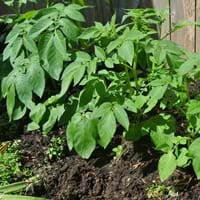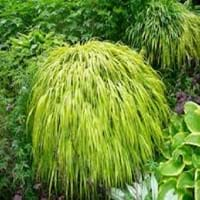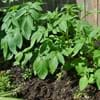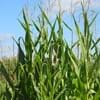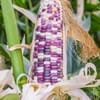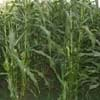Life Span
Annual
Perennial
Origin
Hybrid origin
Japan
Types
it is a variety of potato
Not Available
Habitat
Not Available
meadows, Riverbanks, Wet Woods
USDA Hardiness Zone
Not Available
5-9
Sunset Zone
A1, A2, A3, H1, H2, 1a, 1b, 2a, 2b, 3a, 3b, 4, 5, 6, 7, 8, 9, 10, 11, 12, 13, 14, 15, 16, 17, 18, 19, 20, 21, 22, 23, 24
1a, 1b, 2a, 2b, 3a, 3b, 4, 5, 6, 7, 8, 9, 10, 11, 12, 13, 14, 15, 16, 17, 18, 19, 20, 21, 22, 23, 24
Habit
Clump-Forming
Clump-Forming
Flower Color
Light Pink, Lavender
Blue Violet
Flower Color Modifier
Bicolor
Bicolor
Fruit Color
Yellow green
Purple
Leaf Color in Spring
Green
Yellow, Green, Light Green
Leaf Color in Summer
Green
Light Green
Leaf Color in Fall
Not Available
Orange, Yellow green, Orange Red
Leaf Color in Winter
Not Available
Green, Dark Green, Not Available
Leaf Shape
Ovate
Oblovate
Plant Season
Summer, Fall
Spring, Summer, Fall
Sunlight
Full Sun
Full Sun, Partial Sun, Partial shade
The pH of Soil
Neutral
Acidic, Neutral
Soil Drainage
Well drained
Well drained
Bloom Time
Early Summer, Summer
Late Summer, Early Fall, Fall
Tolerances
Drought
Dry soil, Shallow soil
Where to Plant?
Container, Ground
Ground
How to Plant?
From bulbs
From Rhizomes
Plant Maintenance
Low
Medium
Watering Requirements
Do Not over Water, Water occasionally
Keep ground moist
In Summer
Lots of watering
Lots of watering
In Spring
Moderate
Consistently
In Winter
Average Water
Adequately
Soil pH
Neutral
Acidic, Neutral
Soil Drainage Capacity
Well drained
Well drained
Sun Exposure
Full Sun
Full Sun, Partial Sun, Partial shade
Pruning
No pruning needed
Prune grass to maintain level, Prune if you want to improve plant shape
Fertilizers
Fertilize the soil before planting
organic fertlizers
Pests and Diseases
Red blotch
Not Available
Plant Tolerance
Drought
Shade areas, Shallow soil, Wet Site
Flowers
Showy
Insignificant
Flower Petal Number
Single
Single
Foliage Texture
Coarse
Medium
Foliage Sheen
Matte
Matte
Attracts
Not Available
Ants, Beetles, Caterpillar
Allergy
Not Available
allergic conjunctivitis, Asthma, Rash
Aesthetic Uses
Not Used For Aesthetic Purpose
Beautification, Ground Cover
Beauty Benefits
Not Available
Not Available
Environmental Uses
soil stabilisation
Provides ground cover, Shadow Tree
Medicinal Uses
Not Available
Acne, Aging, Laxative
Part of Plant Used
Bulbs
Leaves
Other Uses
Used As Food
Can be made into a herbal tea, Showy Purposes
Used As Indoor Plant
No
Sometimes
Used As Outdoor Plant
Yes
Yes
Garden Design
Container, Edible, Herb, Vegetable
Container, Edging, Mixed Border, Rock Garden / Wall, Water Gardens
Botanical Name
SOLANUM tuberosum 'Yukon Gold'
HAKONECHLOA macra 'Aureola'
Common Name
Yukon Gold Potato
Golden Japanese Forest Grass, Hakone Grass
In Hindi
Yukon गोल्ड आलू
जापानी वन घास
In German
Yukon Gold Kartoffeln
Japanische gras
In French
Yukon Gold de pommes de terre
Forêt herbe japonaise
In Spanish
Yukon Gold de la Papa
forestales hierba japonesa
In Greek
Yukon Gold πατάτας
Ιαπωνικά γρασίδι δάσος
In Portuguese
Yukon Gold batata
floresta grama japonês
In Polish
Yukon Złote ziemniaków
Japoński las lato
In Latin
Aurum Yukon SOLANUM TUBEROSUM
Forest gramina Italica
Phylum
Not Available
Angiosperms
Class
Not Available
Monocots
Order
Not Available
Poales
Family
Solanaceae
Poaceae
Genus
Solanum
Hachanechloa
Clade
Not Available
Angiosperms
Tribe
Not Available
Not Available
Subfamily
Not Available
Arundinariinae
Number of Species
Not Available
Not Available
Importance of Yukon Gold Potato and Japanese Forest Grass
Want to have the most appropriate plant for your garden? You might want to know the importance of Yukon Gold Potato and Japanese Forest Grass. Basically, these two plants vary in many aspects. Compare Yukon Gold Potato and Japanese Forest Grass as they differ in many characteristics such as their life, care, benefits, facts, etc. Every gardener must at least have the slightest clue about the plants he wants to plant in his garden. Compare their benefits, which differ in many ways like facts and uses. The medicinal use of Yukon Gold Potato is Not Available whereas of Japanese Forest Grass is Acne, Aging and Laxative. Yukon Gold Potato has beauty benefits as follows: Not Available while Japanese Forest Grass has beauty benefits as follows: Not Available.
Compare Facts of Yukon Gold Potato vs Japanese Forest Grass
How to choose the best garden plant for your garden depending upon its facts? Here garden plant comparison will help you to solve this query. Compare the facts of Yukon Gold Potato vs Japanese Forest Grass and know which one to choose. As garden plants have benefits and other uses, allergy is also a major drawback of plants for some people. Allergic reactions of Yukon Gold Potato are Not Available whereas of Japanese Forest Grass have allergic conjunctivitis, Asthma and Rash respectively. Having a fruit bearing plant in your garden can be a plus point of your garden. Yukon Gold Potato has no showy fruits and Japanese Forest Grass has no showy fruits. Also Yukon Gold Potato is not flowering and Japanese Forest Grass is not flowering . You can compare Yukon Gold Potato and Japanese Forest Grass facts and facts of other plants too.
